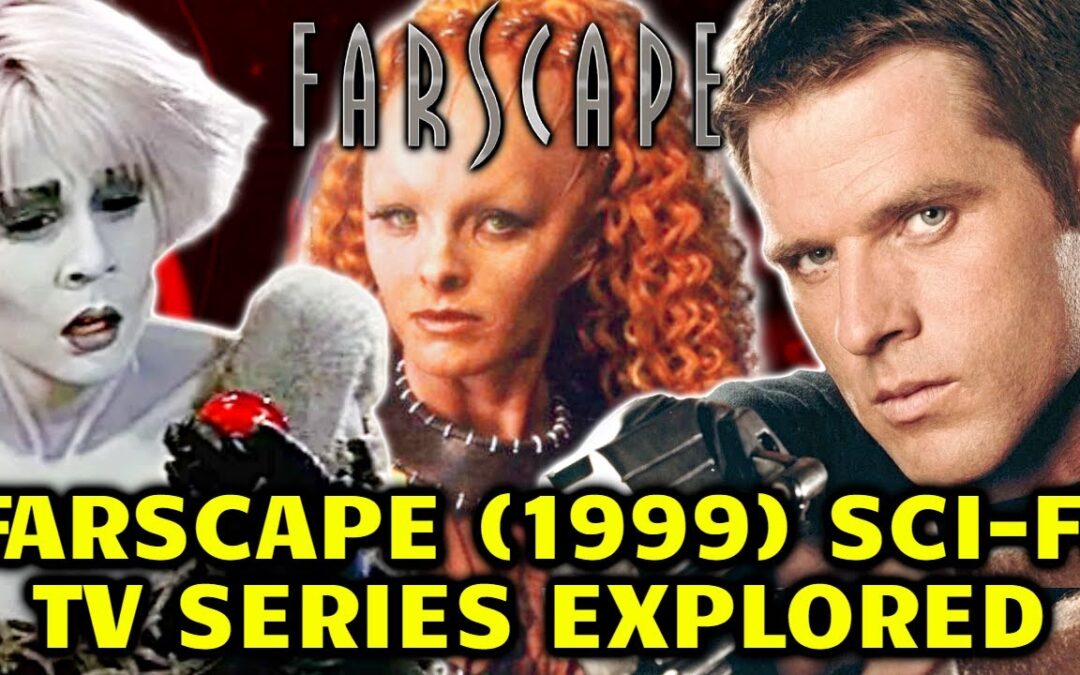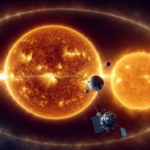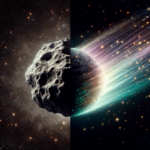Exploring the Uncharted Territories: An In-Depth Look into Farscape (1999-2003)
Farscape plunged enthusiasts into a galaxy brimming with diverse alien species, unexplored planets, and intricate politics, vastly expanding the space opera genre. At its heart, the series introduced viewers to John Crichton, an astronaut from Earth, catapulted into a distant universe. This show not only intrigued audiences with its rich storytelling but also set benchmarks with its ambitious visual effects and puppetry, courtesy of the Jim Henson Company. The fusion of science fiction elements with gripping emotional dramas made Farscape a cornerstone of early 2000s sci-fi television.
The allure of Farscape lies in its adept exploration of the ‘uncharted territories’. These territories were not just literal space regions but also thematic frontiers addressing identity, camaraderie, and the essence of humanity. Through Crichton’s odyssey, viewers were invited to reflect on profound questions, often presented in imaginative and sometimes whimsical scenarios yet always with a palpable sense of urgency and moral depth. The dynamic relationships among the Moya’s crew, a living spaceship, further enriched the narrative, showcasing a spectrum of alien cultures and personal redemption.
One of the show’s most compelling aspects was its bold storytelling choices. Farscape was unafraid to alter the status quo, pushing its characters into ever-evolving arcs that often defied conventional TV narrative structures. From high-stakes adventures that spanned across time and space to intimate explorations of loss and love, the series thrived on unpredictability. Its ability to blend humor with heartache, to intertwine speculative science with serious ethical inquiries, garnered Farscape a dedicated fanbase and critical acclaim.
Moreover, Farscape distinguished itself with groundbreaking visual aesthetics. Utilizing the prowess of the Jim Henson Company, it brought to life an array of alien beings through sophisticated puppetry and animatronics, setting a new standard for realism in sci-fi televison without heavily relying on CGI. This emphasis on practical effects not only fostered a unique visual narrative but also imbued the series with a tangible authenticity, resonating deeply with its audience and enriching the immersive experience of the show’s sprawling universe.
The Enduring Legacy of Farscape: Why It’s Still Relevant Today
Farscape, a groundbreaking science fiction TV series that first aired over two decades ago, continues to capture the imagination and hearts of viewers around the world. Its unique blend of humor, drama, and character development, coupled with innovative special effects, set it apart from other shows of its time. More than just a space opera, Farscape delved into themes of identity, freedom, and the notion of ‘the other,’ themes that are ever more pertinent in today’s global society.
One of the key reasons for Farscape‘s enduring appeal lies in its approach to storytelling. The show was ahead of its time, exploring complex narratives that challenged the viewers’ perceptions of morality and humanity. Through the diverse crew of the living spaceship Moya – a motley crew of aliens and a lone human astronaut – Farscape presented a microcosm of a society learning to work together despite differences, a poignant message in our current times of social and political division.
The series’ use of Jim Henson’s Creature Shop for its alien designs also set it apart, creating a tangible, immersive world that CGI alone could not have achieved. This practical effect marvel gave Farscape an aesthetic authenticity, making the universe it depicted feel lived-in and real. In an era where CGI dominates, the craftsmanship of Farscape emphasizes the value of practical effects and puppetry, showcasing the irreplaceable charm they bring to the screen. This blend of the real and the fantastic helps the series maintain a timeless quality, as it taps into the universal appeal of storytelling through characters that are visually distinctive and emotionally resonant.
Moreover, the complex character arcs and relationships are a testament to the show’s depth. John Crichton’s journey from an astronaut out of his element to a pivotal figure in a galactic saga mirrors the personal growth and resilience found in each of us. His relationships with fellow crew members, fraught with misunderstandings, alliances, and betrayals, reflect the nuanced dynamics of real human interactions. This emotional realism, coupled with the speculative wonders of its setting, allows Farscape to remain a relevant exploration of the human condition through the lens of science fiction.
Unraveling the Best Farscape Episodes: A Guide for New Viewers
If you’re a new viewer venturing into the captivating universe of Farscape, you’re in for a treat. This groundbreaking sci-fi series has enthralled audiences with its blend of adventure, drama, and imaginative storytelling. Sifting through its rich anthology to find the best Farscape episodes can be a monumental task, but fear not; this guide is designed to help you unlock the series’ full potential right from the start.
Among the stellar array of episodes, certain installments stand out for their ingenuity, emotional depth, and pivotal plot developments. For instance, “The Way We Weren’t” and “Crackers Don’t Matter” are often hailed as essential viewing. These episodes not only showcase the series’ creative special effects and compelling character arcs but also delve deep into the complex relationships and moral ambiguities that define the Farscape universe.
In crafting the ultimate viewing experience, paying attention to episodes that unveil the intricate backdrop of the show’s mythology is crucial. Episodes like “Nerve” and “The Hidden Memory” unravel layers of the main characters’ pasts and set the stage for the epic narrative arcs that follow. These key chapters are not just standout episodes but also serve as crucial building blocks, enhancing the viewer’s understanding of the immersive world of Farscape.
For those keen on experiencing the emotional rollercoaster and the innovative storytelling that Farscape offers, beginning with these iconic episodes will certainly set the stage. As you explore the universe of Farscape, each episode will contribute to a richer, more nuanced understanding of its fantastical realm. Embrace the adventure, and let these unforgettable episodes be your guide into the heart of one of science fiction’s most beloved series.
From Puppets to Wormholes: The Innovative Special Effects of Farscape
The science fiction television series Farscape broke new ground in the realm of visual storytelling, thanks in part to its groundbreaking use of special effects. From its inception, the show ambitiously blended advanced puppetry, state-of-the-art CGI, and practical effects to create its unique universe. This innovative approach allowed Farscape to craft worlds and creatures that were not only visually compelling but also rich in character and emotion.
One of the most iconic aspects of Farscape’s visual effects legacy is its use of puppets, created by the Jim Henson Creature Shop. This collaboration brought to life a myriad of complex, non-human characters, such as Rygel and Pilot, which stood out for their intricate design and lifelike movements. This use of puppetry, an art form often relegated to children’s programming, in a series aimed at adults was both revolutionary and a testament to the creative vision behind Farscape. It bridged the gap between the fantastical and the believable, making the alien aspects of the show unexpectedly relatable.
Furthermore, Farscape’s portrayal of wormholes as more than just a sci-fi cliché was another highlight of its special effects prowess. The show’s visual effects team pushed the boundaries of technology to represent wormholes in a visually stunning manner, offering not just a mode of transportation but a complex narrative element intertwined with the show’s core plot. The depiction of these cosmic phenomena with vivid colors and dynamic movements added to the show’s allure, captivating the audience’s imagination and solidifying its place in sci-fi history.
Besides the puppetry and CGI, Farscape’s commitment to practical effects and innovative cinematography also played a crucial role in its unique visual storytelling. The show’s creators often opted for tangible, on-set effects and complex makeup to achieve a more authentic look and feel. This combination of various techniques ensured that each episode of Farscape was not only a narrative journey but also a visual spectacle. By integrating these various elements, Farscape set a new standard for what was possible in the realm of TV science fiction special effects.
Array










